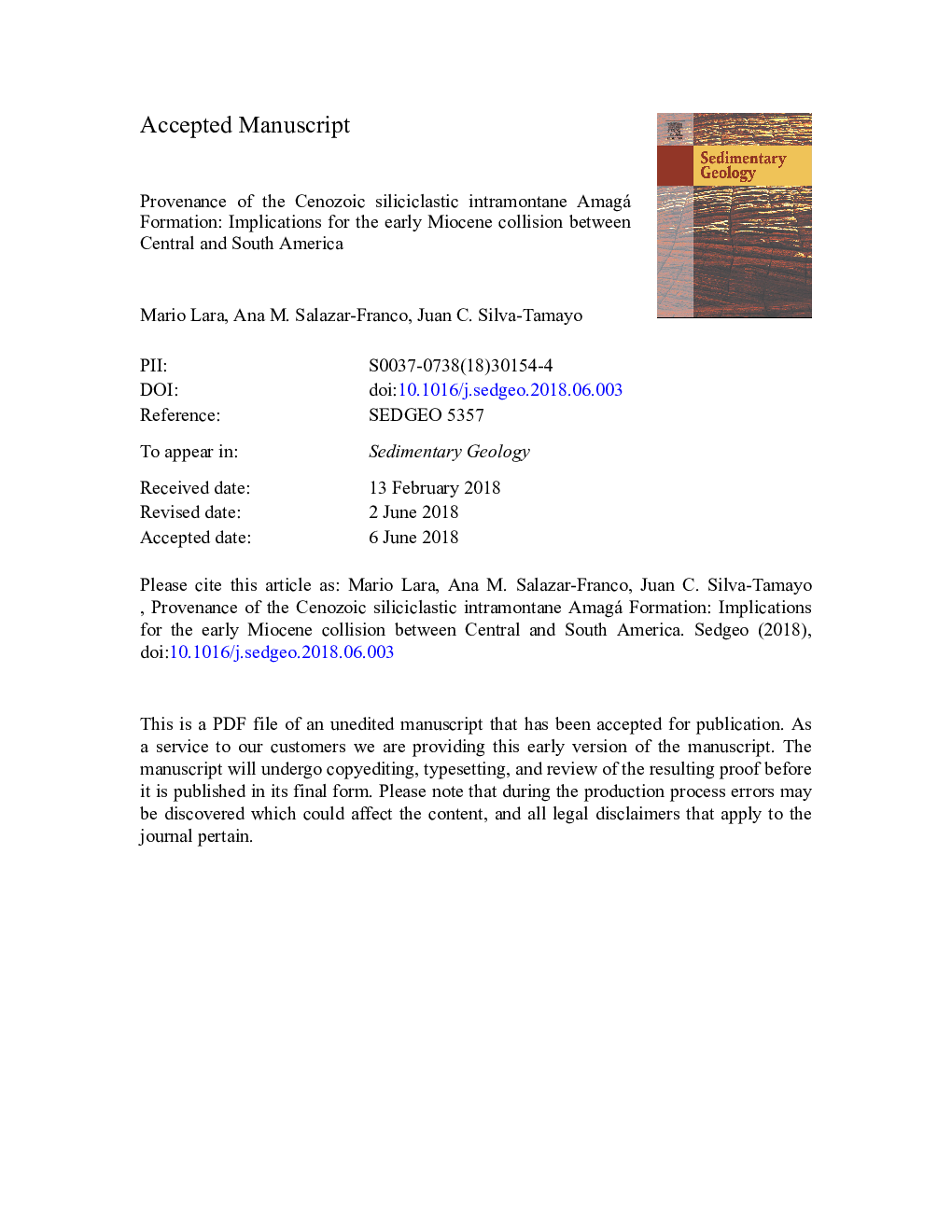| کد مقاله | کد نشریه | سال انتشار | مقاله انگلیسی | نسخه تمام متن |
|---|---|---|---|---|
| 8908472 | 1635990 | 2018 | 63 صفحه PDF | دانلود رایگان |
عنوان انگلیسی مقاله ISI
Provenance of the Cenozoic siliciclastic intramontane Amagá Formation: Implications for the early Miocene collision between Central and South America
دانلود مقاله + سفارش ترجمه
دانلود مقاله ISI انگلیسی
رایگان برای ایرانیان
کلمات کلیدی
موضوعات مرتبط
مهندسی و علوم پایه
علوم زمین و سیارات
فرآیندهای سطح زمین
پیش نمایش صفحه اول مقاله

چکیده انگلیسی
The late Oligocene-middle Miocene Amagá Formation is a continental siliciclastic succession deposited along several semi-isolated intramontane sedimentary basins in the northwestern the Andes. Despite the potential information that this sedimentary record may bear on the evolution of tropical intramontane siliciclastic successions along active Andean type convergent margins, little is known about its provenance. Here we document petrographic, heavy mineral and detrital zircon U-Pb ages data from the Amagá Formation, cropping out along the Santa Fe de Antioquia - San Jerónimo Sub-Basin, from which we investigate the evolution and controlling factors leading to changes in its provenance. Sandstones from the late Oligocene Lower Member of the Amagá Formation display compositional modes and U-Pb detrital zircon ages which suggest sediment sources exclusively associated to the continental South American Plate. The compositional modes and detrital zircon U-Pb ages of sandstones from the early - middle Miocene Upper Member suggest, instead, sediment sources associated to both, the South American Plate and the allochthonous Panamá-Chocó Block. In particular, the Upper Member documents the arrival of detrital zircons younger than 50â¯Ma (18.7, 21.0, 25.3, 31.9, 40.7, 45.1â¯Ma), which are not present in the South American Plate. This change in provenance parallels a change in sedimentary environments, from meandering (Lower Member) to braided (Upper Member) rivers, which have been interpreted as a major decrease in sediment accommodation space along the northern Andes. This decrease in accommodation space is associated to a regional accelerated uplift in the northern Andes resulting from the early Miocene accretion of the Panamá-Chocó Block to northern South America.
ناشر
Database: Elsevier - ScienceDirect (ساینس دایرکت)
Journal: Sedimentary Geology - Volume 373, 1 October 2018, Pages 147-162
Journal: Sedimentary Geology - Volume 373, 1 October 2018, Pages 147-162
نویسندگان
Mario Lara, Ana M. Salazar-Franco, Juan C. Silva-Tamayo,